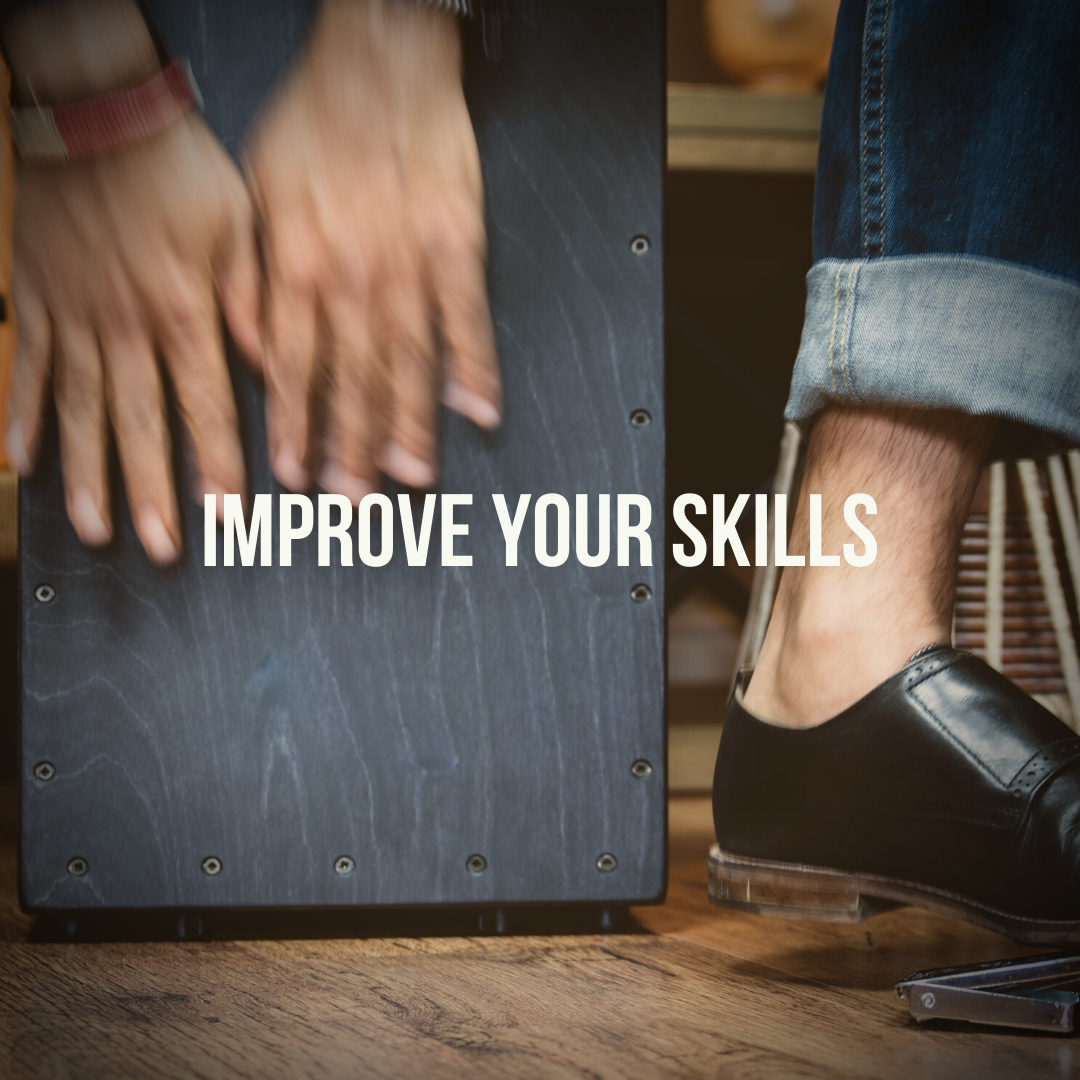Posted by Steve Head on 9th May 2023
The Different Techniques and Styles of Playing the Cajon: How to Improve Your Skills
Are you a percussionist or a music enthusiast interested in playing the cajon? If yes, then you might be wondering about the different techniques and styles of playing the cajon and how you can improve your skills in this area. The cajon is a box-shaped drum originally from Peru, which has gained immense popularity worldwide due to its versatility, portability, and unique sound. Whether you want to play the cajon for fun, in a band, or as a soloist, mastering its various techniques and styles can enhance your performance and creativity.

In this article, we will explore the different techniques and styles of playing the cajon, along with some tips on how to improve your skills. We will cover everything from basic strokes to advanced techniques, including flamenco, Afro-Peruvian, and contemporary styles. So, let's dive in and explore the world of the cajon!
Basic Techniques and Strokes of the Cajon
Before we move on to advanced techniques, it's essential to master the basic techniques and strokes of the cajon. The cajon has six sides, and each side produces a different sound. The basic strokes of the cajon include bass, tone, and slap.
Bass Stroke
The bass stroke is the most crucial technique of the cajon, which produces a deep bass sound. To play the bass stroke, hit the center of the front panel of the cajon with your dominant hand's palm. Make sure to hit the center of the panel to get a full and resonant sound.
Tone Stroke
The tone stroke is a mid-range sound produced by hitting the upper part of the front panel of the cajon with your fingers. To play the tone stroke, make a cup shape with your fingers and hit the upper part of the panel with your fingertips.
Slap Stroke
The slap stroke is a high-pitched sound produced by hitting the upper edge of the front panel of the cajon with your fingers. To play the slap stroke, use the tips of your fingers and hit the upper edge of the panel. Make sure to snap your fingers back to get a crisp sound.
Advanced Techniques and Styles of the Cajon
Now that you have mastered the basic techniques and strokes of the cajon let's explore some advanced techniques and styles.
Flamenco Style
The flamenco style of the cajon is characterized by intricate rhythms, foot tapping, and hand clapping. To play the flamenco style, use a combination of bass, tone, and slap strokes, along with foot tapping and hand clapping. The flamenco style requires a lot of practice, precision, and coordination.
Afro-Peruvian Style
The Afro-Peruvian style of the cajon is characterized by syncopated rhythms and complex patterns. To play the Afro-Peruvian style, use a combination of bass, tone, and slap strokes, along with different finger and hand techniques. The Afro-Peruvian style requires a good sense of rhythm and timing.
Contemporary Style
The contemporary style of the cajon is characterized by a fusion of different genres and styles, including jazz, funk, rock, and pop. To play the contemporary style, use a combination of different techniques, strokes, and rhythms, along with improvisation and creativity. The contemporary style requires a good understanding of different music genres and styles.
Tips to Improve Your Cajon Skills
Now that you have learned about the different techniques and styles of playing the cajon, here are some tips to improve your skills:
- Practice regularly: Practice is the key to mastering any musical instrument, including the cajon. Set aside some time every day to practice different techniques and styles, and gradually increase the difficulty level as you progress.
- Listen to different styles: Listening to different styles of cajon playing can enhance your knowledge and understanding of the instrument. Try to listen to flamenco, Afro-Peruvian, and contemporary styles and identify the different techniques and rhythms used.
- Join a cajon community: Joining a cajon community or a music school can provide you with valuable feedback, guidance, and inspiration. You can also learn from other cajon players and participate in workshops and performances.
- Use a metronome: A metronome can help you develop a good sense of timing and rhythm, which is essential for playing the cajon. Use a metronome while practicing different techniques and styles to improve your accuracy and precision.
- Experiment with different sounds: The cajon has six sides, and each side produces a different sound. Experiment with different strokes and techniques on different sides to create a variety of sounds and rhythms.
- Incorporate your own style: The cajon is a versatile instrument that allows you to incorporate your own style and creativity. Experiment with different rhythms, techniques, and styles to develop your own unique playing style.
FAQs
Q1. Is the cajon a difficult instrument to learn?
A1. The cajon is relatively easy to learn compared to other percussion instruments. However, mastering different techniques and styles can take time and practice.
Q2. Do I need any prior musical experience to play the cajon?
A2. No, you don't need any prior musical experience to play the cajon. The basic techniques and strokes are easy to learn, and you can gradually progress to advanced techniques and styles.
Q3. Do I need to buy an expensive cajon to improve my skills?
A3. No, you don't need to buy an expensive cajon to improve your skills. A basic cajon with good sound quality is enough to learn and practice different techniques and styles.
Q4. Can I play the cajon as a soloist or in a band?
A4. Yes, you can play the cajon as a soloist or in a band. The cajon is a versatile instrument that can accompany different genres and styles of music.
Q5. Can I use the cajon for recording and live performances?
A5. Yes, you can use the cajon for recording and live performances. The cajon produces a unique and versatile sound that can enhance any music arrangement.
Q6. How long does it take to master the cajon?
A6. It depends on your dedication, practice, and learning approach. Some people can master the basic techniques and styles in a few months, while others may take years to achieve mastery.
Conclusion
Playing the cajon can be a fun and rewarding experience that allows you to express yourself creatively and musically. By mastering different techniques and styles, you can enhance your skills and develop your own unique playing style. Remember to practice regularly, listen to different styles, join a cajon community, and incorporate your own style to improve your cajon skills. So, grab your cajon, and let the rhythm take over!
Check out my blog post



